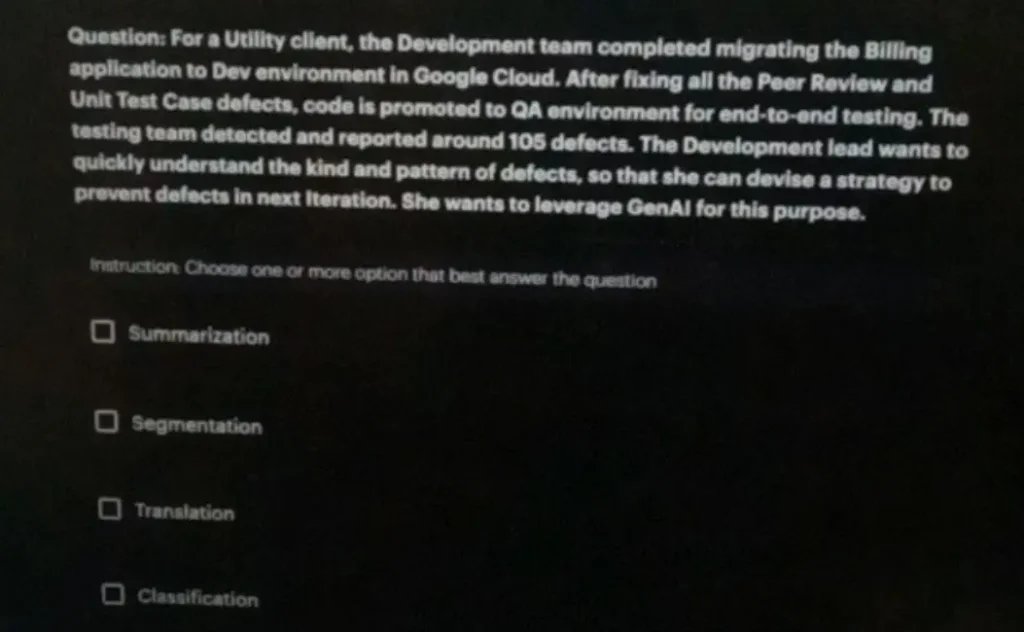Homework Help: Questions and Answers: For a Utility client the Development team completed migrating the Billing application to Dev environment in Google Cloud. After fixing all the Peer Review and Unit Test Case defects, code is promoted to QA environment for end-to-end testing. The testing team detected and reported around 105 defects. The Development lead wants to quickly understand the kind and pattern of defects, so that she can devise a strategy to prevent defects in next Iteration. She wants to leverage GenAl for this purpose. Instruction: Choose one or more option that best answer the question.

a) Summarization
b) Segmentation
c) Translation
d) Classification
Answer:
Pokémon Legends: Z-A – Nintendo Switch 2
First, let’s understand the scenario:
- The Development team has completed a migration of a Billing application to Google Cloud.
- The code has been promoted to QA for end-to-end testing.
- 105 defects were detected and reported by the testing team.
To address the problem of understanding the types and patterns of defects reported during testing, we need to consider which options would best allow the Development lead to analyze the data. Here’s a breakdown of each option:
Given Options: Step by Step Answering
a) Summarization
- This involves condensing information into a shorter form, highlighting key points. It could be useful to get a quick overview of the defects and their major themes.
b) Segmentation
- This means dividing the data into distinct sections or categories. It can help group similar defects together, making it easier to identify patterns and trends.
c) Translation
- This is converting information from one language to another. It doesn’t seem directly relevant to understanding defect patterns unless there is a language barrier in the data.
d) Classification
- This involves categorizing data based on predefined labels or criteria. It is useful for identifying types of defects and sorting them into meaningful categories.
Final Answer
Based on the above analysis, the most suitable options for analyzing and understanding the defects would be:
b) Segmentation
d) Classification
These two techniques together would allow the GenAI system to categorize the defects into different types (classification) and group similar defects together (segmentation). This would give the Development lead a clear understanding of the kinds of defects occurring and any patterns in their occurrence, enabling her to devise targeted strategies for prevention in the next iteration.
Learn More: Homework Help
Q. Which of the following is not a right set of Foundation Models available?
Q. Identify the activities (build) that can be automated to create a continuous integration pipeline.
Q. Rio Awareness Assessment: Select as appropriate about Human Errors


